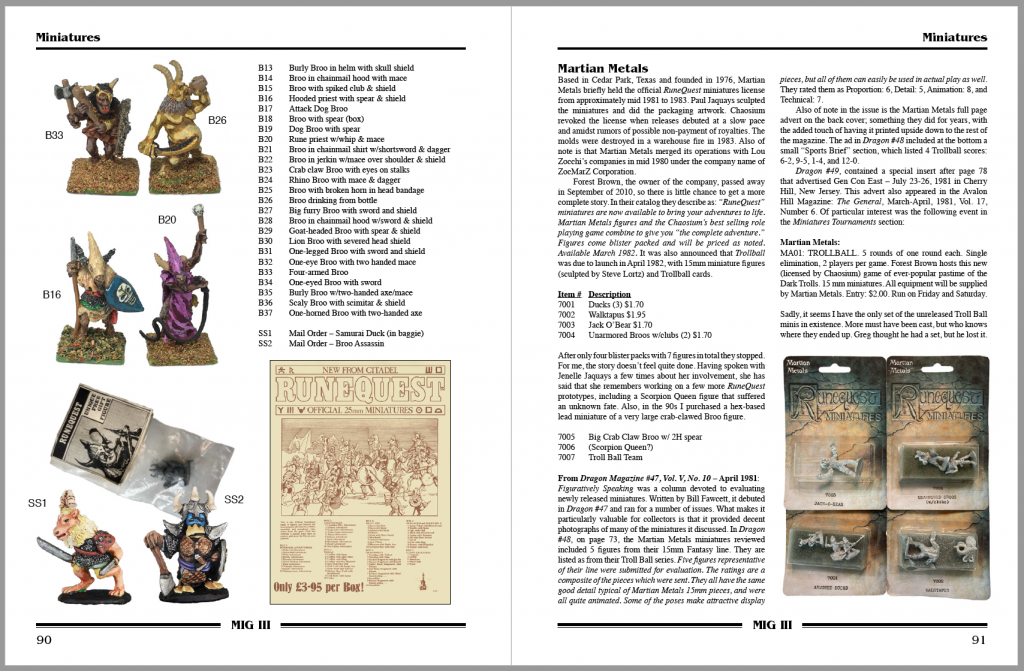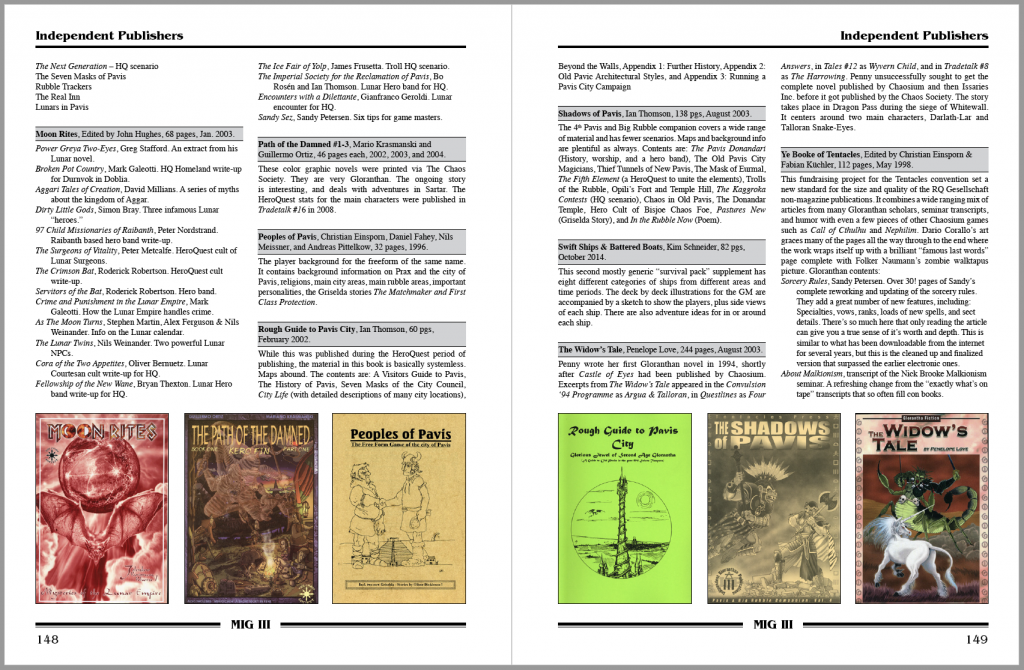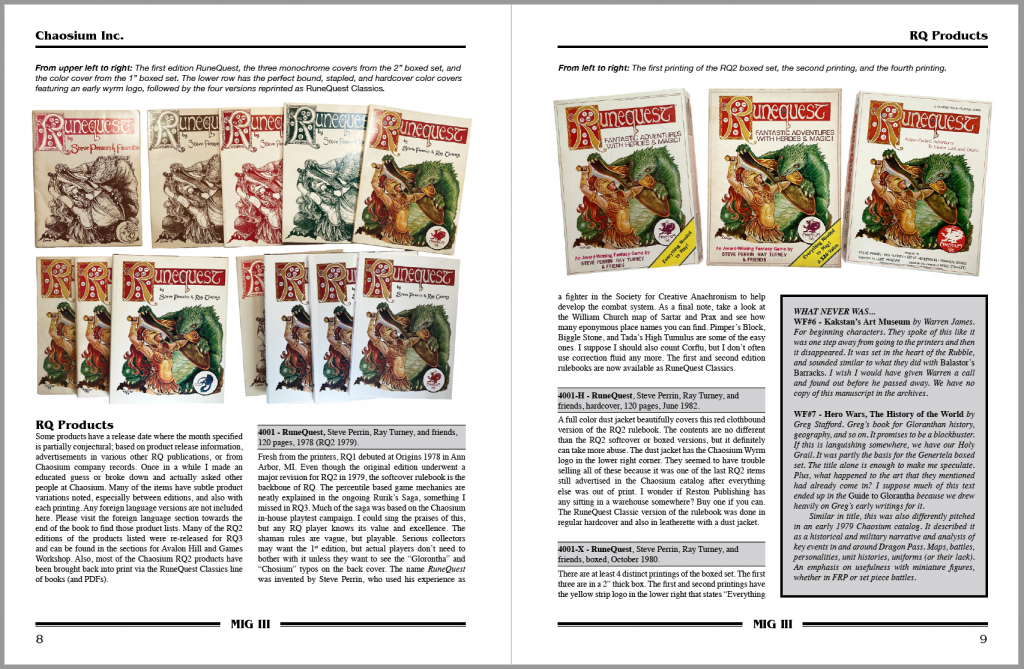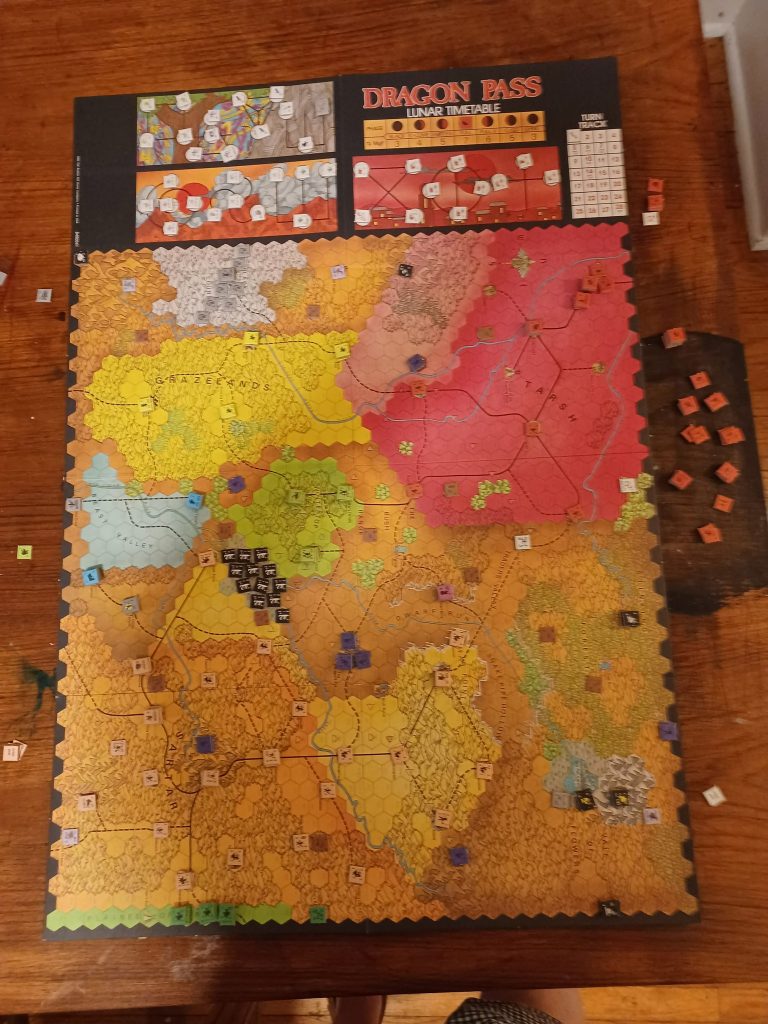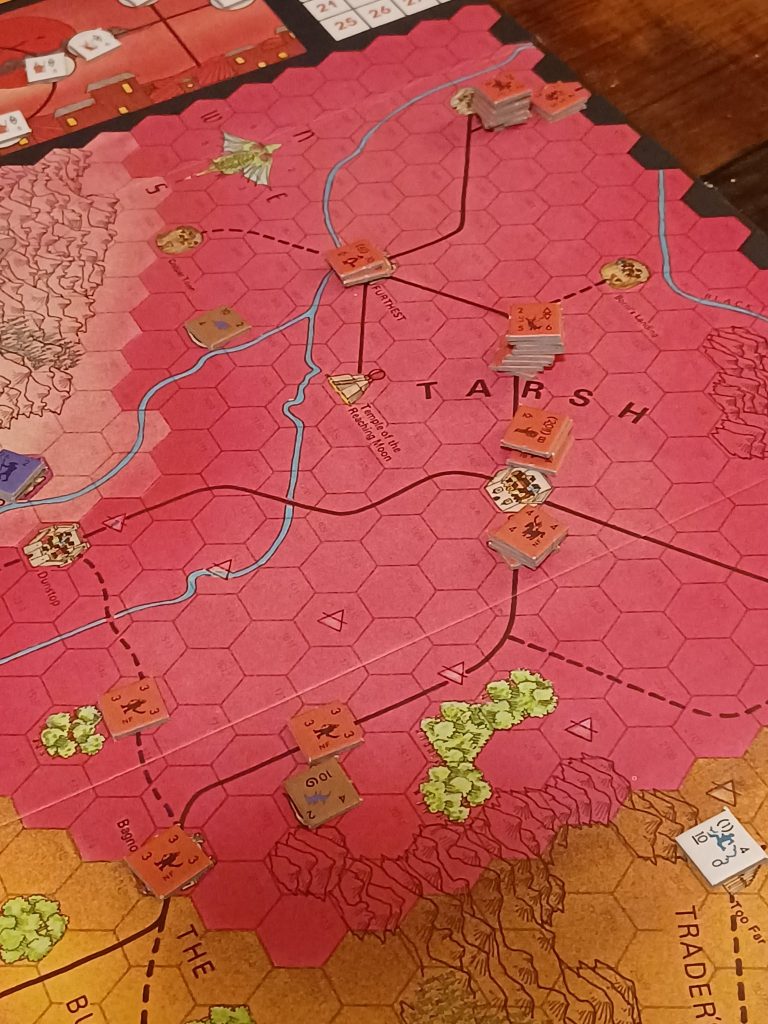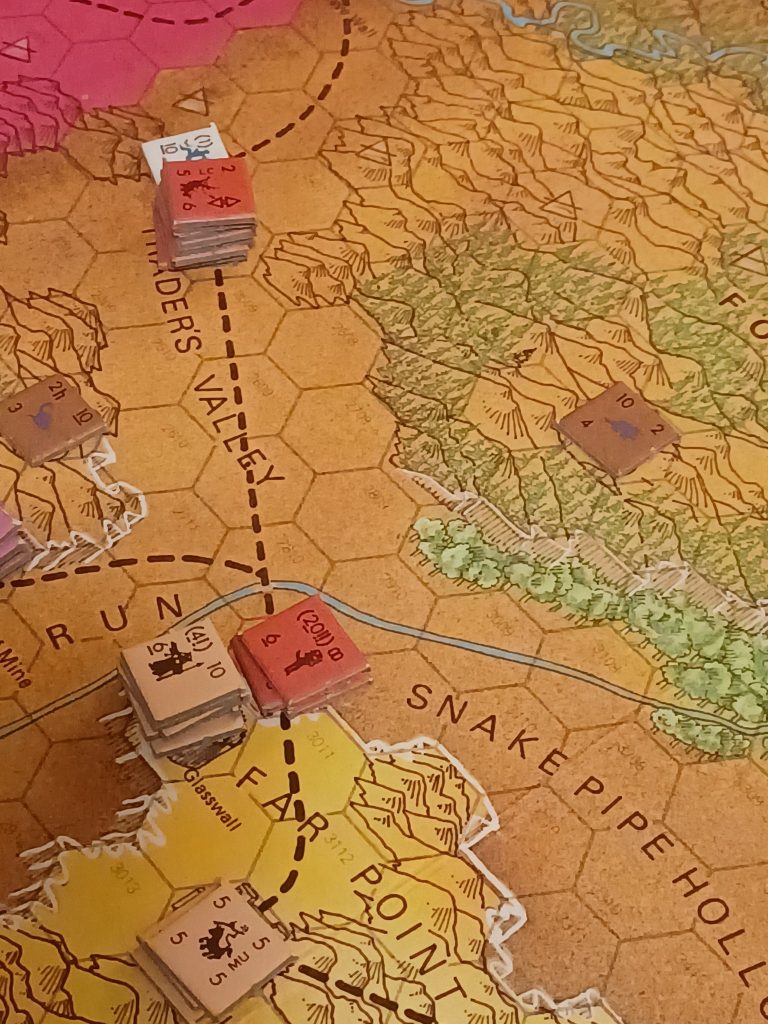Welcome to a new issue of the Journal of Runic Studies, the premier Malkioni publication for studies into the nature of Glorantha. If you haven’t subscribed yet, please consult with the spirit bound to the appropriate electronic page.
Some Editorial Changes Coming
As of this month, Chaosium is properly archiving Jeff’s social media posts on the Well of Daliath. In fact, you’ll see that this week’s “Jeff Notes” section links to them, instead of the original Facebook posts. Before that, the Well of Daliath only had simple copy/pasted text without much formatting and without any accompanying media such as pictures or linked videos. These limitations were in part what made me start the “Jeff Notes” sections of this newsletter, since I figured they would act as “proper archiving”.
But now it’s time to re-evaluate this decision. With proper archiving now happening on the Well of Daliath, the only value being added in the “Jeff Notes” here are my annotations. I doubt that they’re worth reading Jeff’s posts here instead of on the Well of Daliath, so starting next week I will mostly likely simply compile the links to new entries, and annotate only those that I find interesting. Even then, the annotations will probably be much shorter than what you’ve been used to.
Do you think this is a good direction for the Journal? Do you have suggestions? Contact me here with your thoughts!
God Learner Sorcery
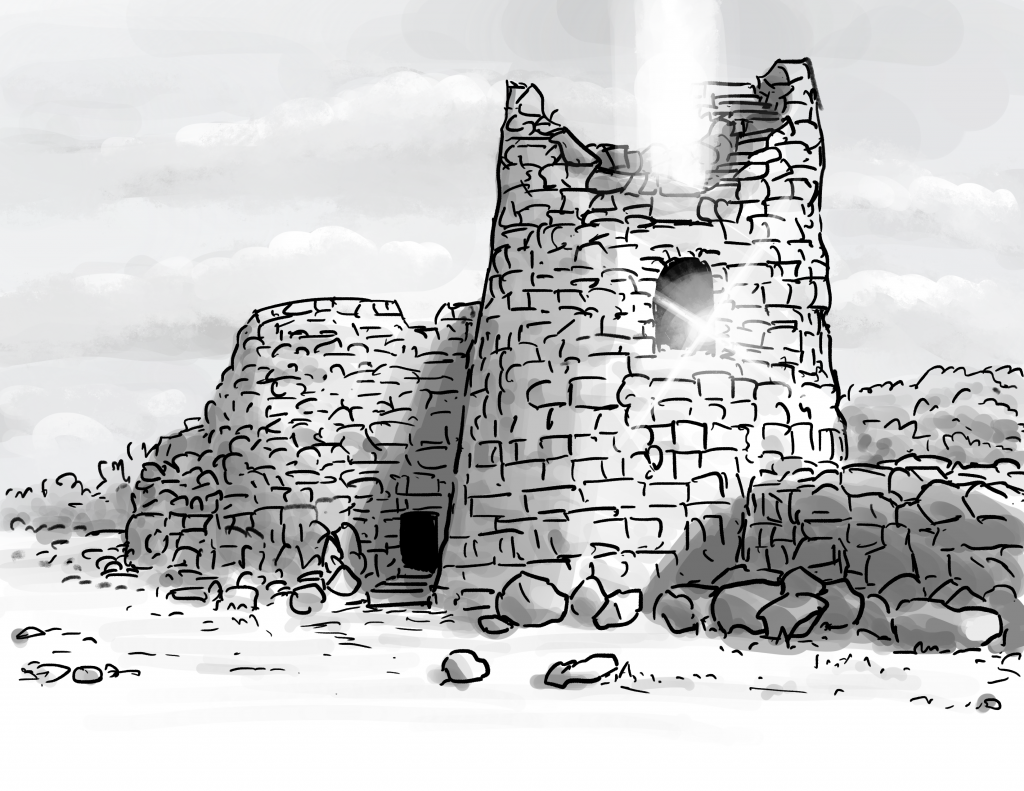
Here is what us God Learners were up to this week.
Episode 11: The Travels of Biturian Varosh (Part 4)

It’s a bit late but episode 11 of our podcast is finally out! Drew Baker joins us again to follow the travels of Biturian Varosh, which is doubly appropriate since he was with us for part 3, and his latest book is about travelling in Dragon Pass!
Chaosium News

Here are this week’s Chaosium news!
Quick! Campaign Coins Discount!
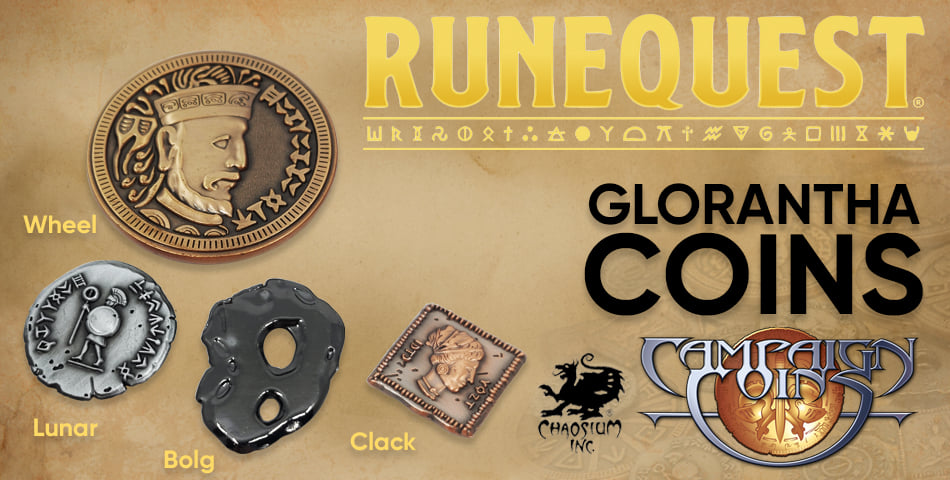
Campaign Coins, makers of cool imaginary coins and other gamer-adjacent tokens, have a short-lived 10% discount on their RuneQuest coins, which include all the coins described in the Guide to Glorantha and RuneQuest rulebook. The coupon code is YELMAL10, but it’s only valid until midnight on May 9th… that’s tomorrow Monday, so hurry up!
More MIG3 Previews
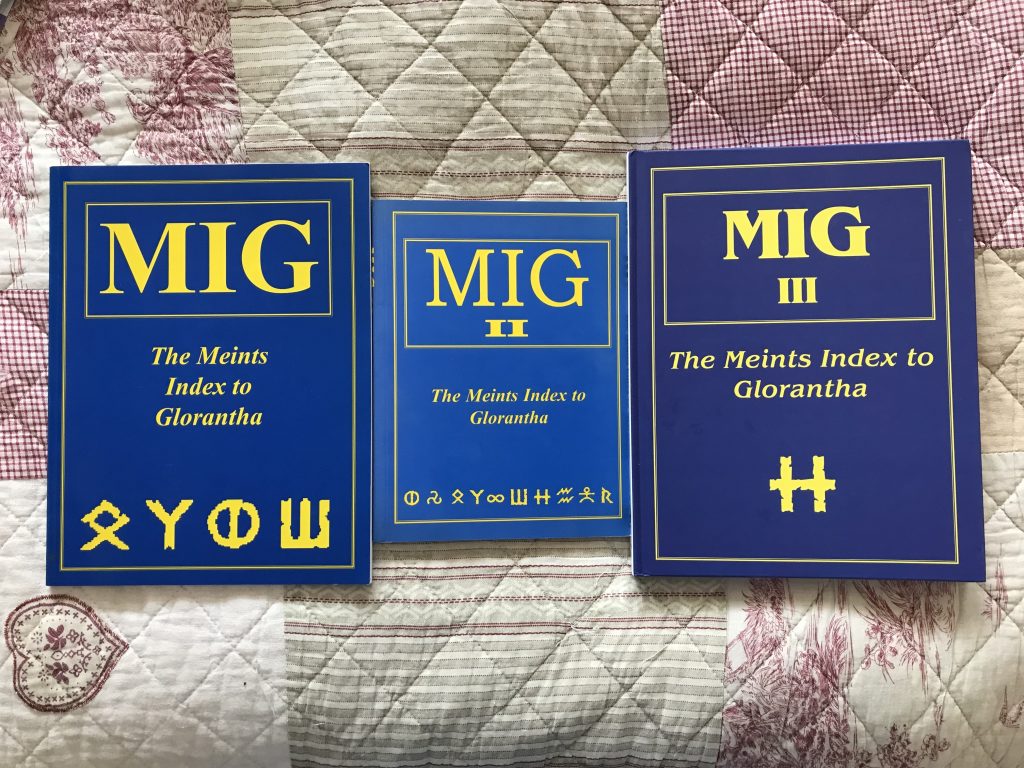
Advance copies of the Meints Index to Glorantha were handed out at ChaosiumCon to contributors and special friends, but if you’re not one of those (like, say, Nick Brooke who has all three pictured above), then you can take a peek at these previews shared by Rick Meints:
The book should come out “soon”, probably via print-on-demand. It has 264 pages of Glorantha-related publishing history including all the information you never thought you wanted to know about all the different printings of RuneQuest 2nd edition, the miniature lines, the fanzines, and more.
Heroquesting Rules
In case you were getting confused about when and how the much anticipated heroquesting rules for RuneQuest would see the light, here’s the latest information gleaned from Facebook and BRP Central:
- The also-quite-anticipated RuneQuest Gamemaster Guide (which was cross-referenced in the rulebook four years ago!) will have the “core” heroquesting rules.
- A “full-fledged heroquesting book” will also be later published.
My educated guess is that this second book will include a sort of gazetteer of the hero and god planes. This will most likely include various maps (such as the one below that Jeff shared a couple times online), with details of what you might find in each location, who you might encounter, what sort of challenge they might give you, and what sort of boons and banes you might come out with.
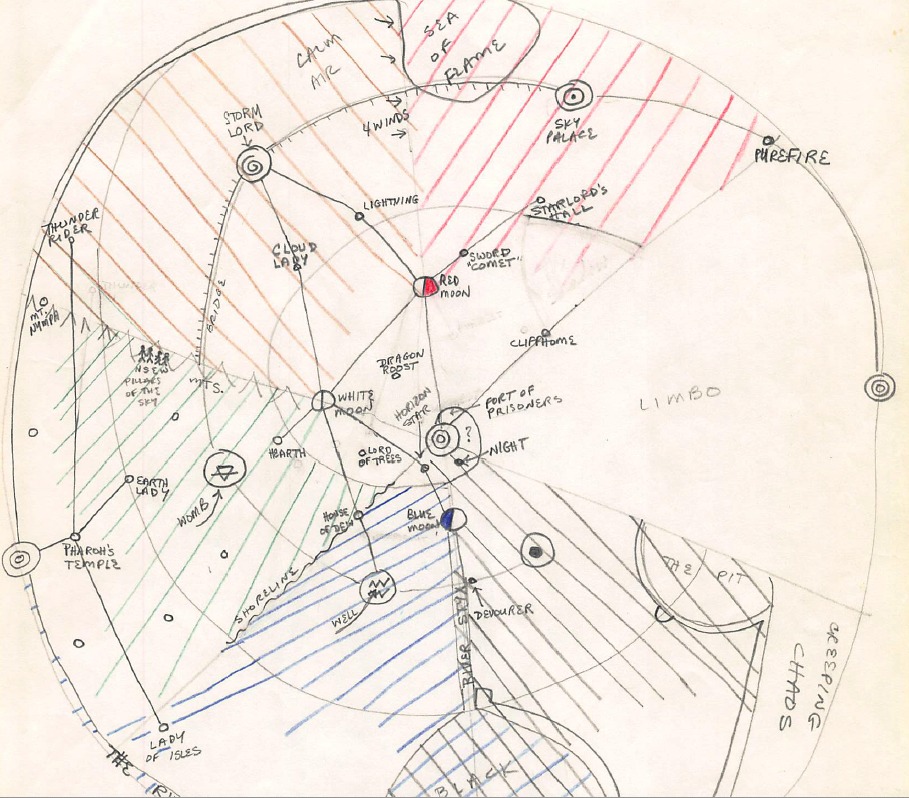
Jeff made this clear:
[…] it is VITAL that we get this right. Feedback from conventions, sessions for game designers, and other playtesting suggests we are pretty much there, but this links into SO MANY things that we need to do it right.
In other words, this won’t get published until Chaosium is happy about it, which means it might get delayed some more.
Jonstown Compendium

The Jonstown Compendium is Chaosium’s community content program for all Gloranthan games, hosted on DriveThruRPG. Disclaimer: all the relevant links are affiliate links that hopefully will let us cover some of the hosting and maintenance costs for the website and podcast! Thanks for using them!
The Six Paths
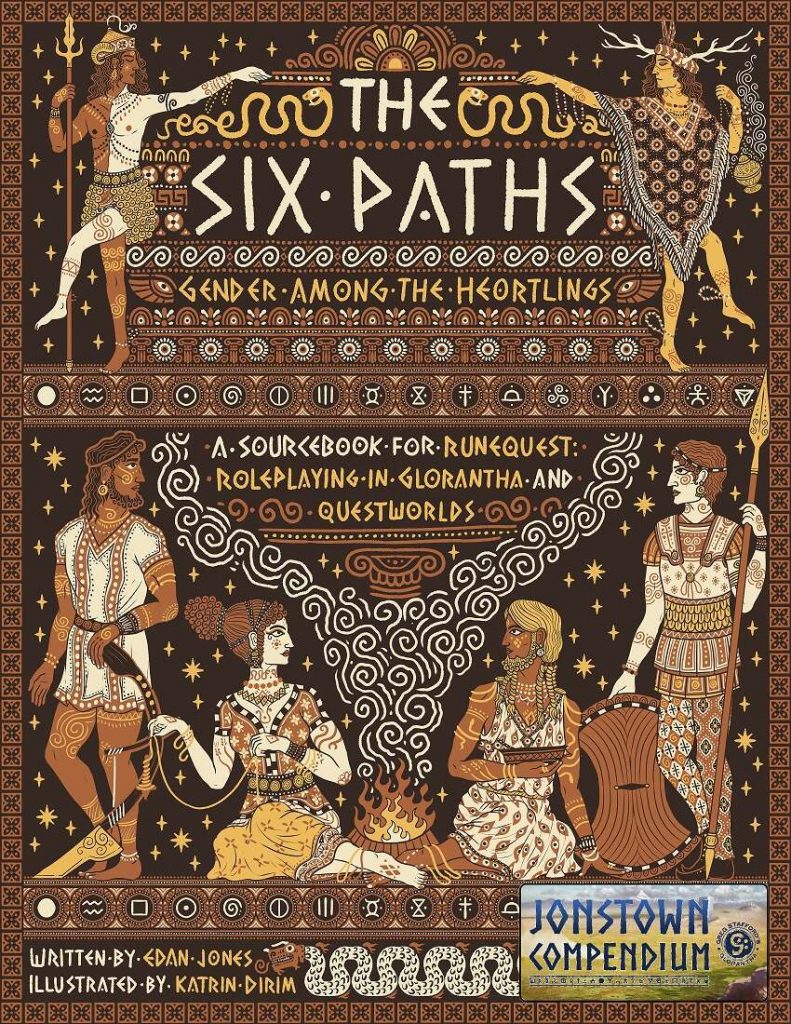
Edan Jones has just released The Six Paths, a book on “gender among the Heortlings”, illustrated by Katrin Dirim. This short book gives some information about how the many sexes and genders of the Orlanthi might look like (remember that the rulebook mentions 4 sexes and 6 genders in their culture), includes detailed write-ups for Heler, Nandan, and Vinga, and wraps up with several NPCs who belong to these cults.
The book is pay-what-you-want, but the authors ask that you give at least 50 cents to keep the product in the community content rankings. They also encourage you to donate some money to your local LGBTQ charity.
Duckpac Preview
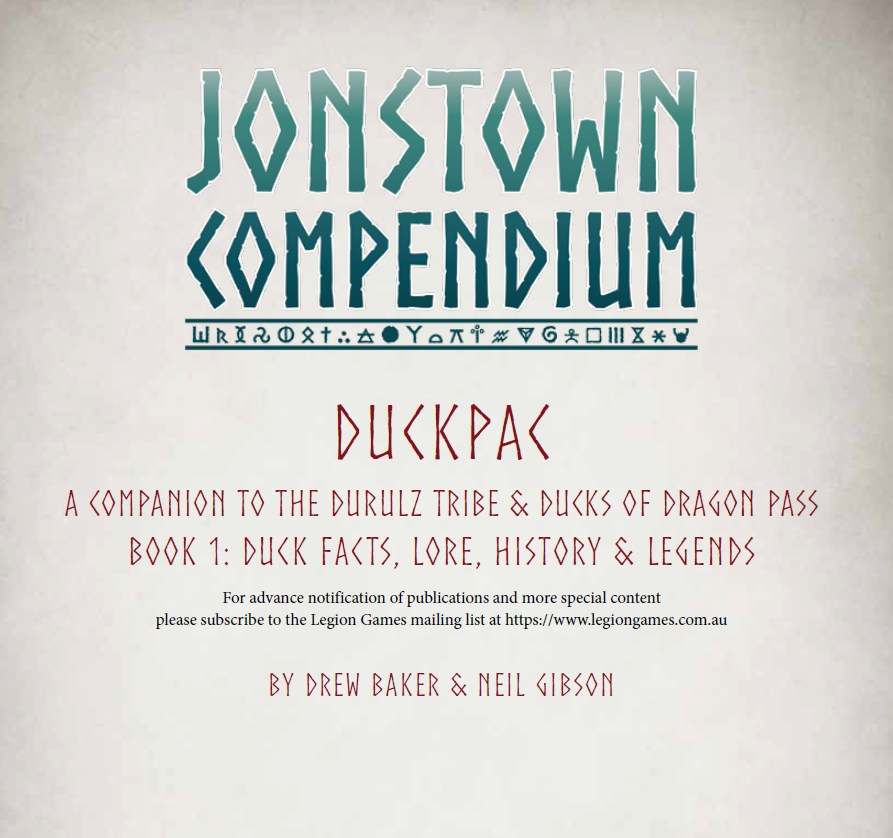
Neil Gibson and Drew Baker are teasing Duckpac, a collection of supplements for Durulz characters! Releasing later this month on the Jonstown Compendium, the whole thing is modelled after the classic Trollpak structure:
- Book One is “facts, lore, history & legends” about the ducks.
- Book Two is for making a duck adventurer.
- Book Three will have some duck-focused scenarios.
- Book Four is a bit extra: it’s a solo-quest named “Redfeather Dreaming”. In fact, Neil had mentioned it in our gamemastering episode, when he was our guest, asking for playtesters.
The whole thing was too big to release as a single book, especially when you consider that anything over 200 pages or so tends to sell a lot less unless the author is ready to slash prices past any kind of sustainable point.
Andrasta’s Ring
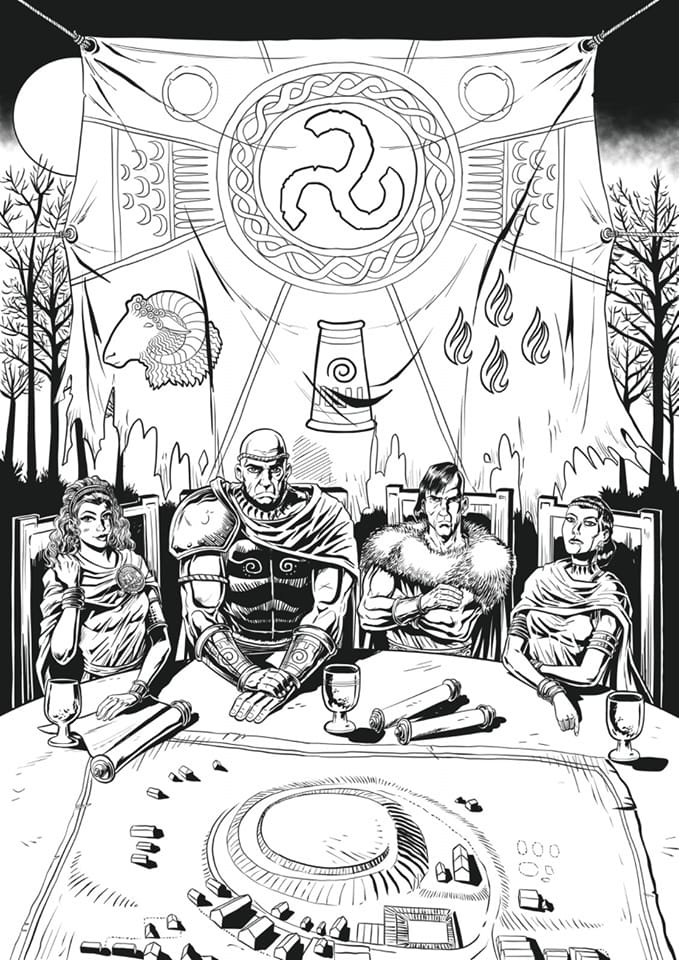
Ernesto Orellana has been teasing a book about the Alone Confederation in northern Sartar:
Xavier and I can’t wait for this supplement to be released. An ambitious project with the tribes of Alone and their intrigues as background.
I’m very excited about this since the Alone area is where I’ve setup my own campaign. I’m sure my take on the area will be wildly different from Ernesto’s and Xavier’s…
Six Saisons en Sartar
Jonathan Springfield and 7Tigers have announced that a French translation of Six Seasons in Sartar is in progress.
Jeff’s Notes

Jeff Richard, the current mastermind on everything Gloranthan at Chaosium, is often posting notes and thoughts on the RuneQuest Facebook group. Here’s our curated list from the past week. A partial archive of these sources is compiled on the Well of Daliath.
Also, note the editorial change coming next week, mentioned at the top of the newsletter.
The Adventures of Young Argrath
Jeff talks about the adventures of Young Argrath:
One thing we likely do not play around with enough is the iconography of Argrath’s adventures from 1621-1624. In Teshnos, he defeated elephants by cutting off their noses. He took the Emerald Frog from Teleos, and gained the friendship of the Purple People. In Flanch he was betrayed and trapped by the “eating trees” but survived and had his vengeance for their treachery. In Laskal, he helped Harrek against the Bat Hsunchen. Argrath was one of those who found the Iron City in Jrustela, and helped plunder Noloswal. And many more adventures as well.
I wonder if perhaps Argrath might sometimes be identified with an elephant helmet like Alexander or similar representations of his adventures in fantastic faraway lands.
Indeed, Alexander met Persian elephants in battle. The first time was possibly the Battle of Gaugamela in 331 BCE, although disappointingly there might have only been 15 elephants there, and they might have been retired because of fatigue. Alexander prevailed thanks to better organized troops and better tactics but Argrath, as always, is an asshole who goes into animal cruelty right away. I wonder if there’s any Chalana Arroy subcult analogous to PETA… anyway, Jeff points at this depiction of Alexander (below) when he writes about the “elephant helmet”.
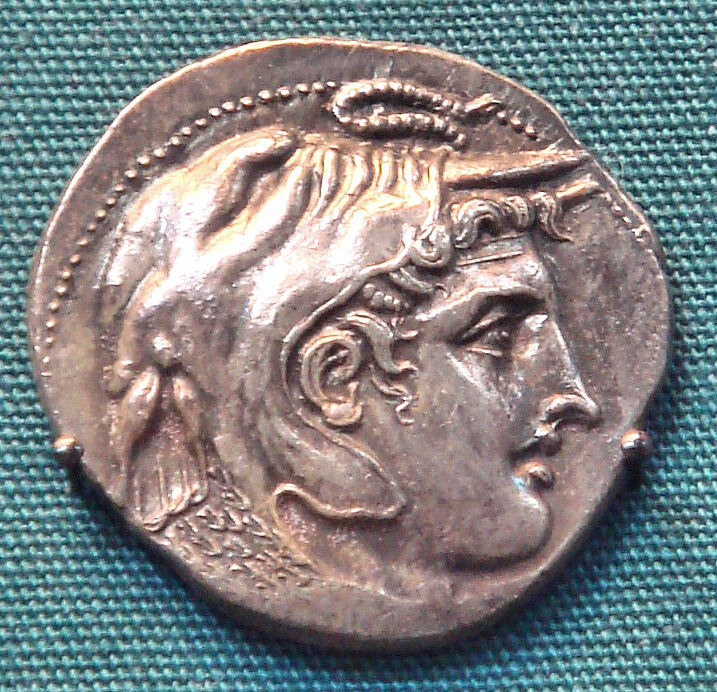
It’s almost certain that Alexander never wore such a helmet (in fact he’s often depicted on coins with various helmets he most likely never wore), but Argrath? He’s been drawn with crazier helmets, so who knows.
Ok, now let’s look at all these places and people mentioned casually in this laundry list of feats.
Teleos is a big tropical island just east of Magasta’s Pool, in the centre of the ocean. Argrath got there while circumnavigating Glorantha with his buddy Harrek and the Wolf Pirates. Anyway, Teleos is one of these weird Gloranthan things, where the six human tribes who live there each have a different skin colour (blue, green, orange, purple, red, and yellow). The little I found is that Argrath supposedly “helped the purple tribe” and “came away with the Emerald Frog”, also known as the “Eater of Souls”. It might have been a good thing because the “curse dividing people of Teleos by color” was ended after that.
Sandy Petersen has some wild theories about what that might be about, but we won’t go into that (you can find them in the Kraken transcripts of his “More Forgotten Secrets of Glorantha” panel).
Flanch is in the broader region of Maslo, all the way down south, in Pamaletela (we can see that Argrath’s youth was a giant cosmic road-trip… well, sea-trip I guess). It’s a jungle with Agimori cities dotting the shorline (the Agimori are like the Gloranthan Africans, basically). These cities are in constant warfare with the yellow elves that control the dense jungle that covers much of the land. They have “warriors who specialize in fighting against the elves”, so maybe if you have an elf problem, you can visit there to get a few pointers.
Laskal is also down in Pamaltela. This Bat Hsunchen stuff might be fun to play, though. There are 120k “bat people” around Fonrit, and while different tribes are associated with different sorts of bats as their animal totem, the main religious people are associated with the vampire bat. It’s hard not to get adventure ideas, right? Bonus point: the bat people sort of unified most of the local Hsunchen people in 1613 under the “Pujaleg Empire”, which is powerful enough to get tribute from the cities of Laskal. When the were-vampire-bats come to town, you better have your blood offering at the door…
Among his strangest adventures must have been against the Pujaleg Bat People. Argrath aided Harrek in defeating them, and the White Bear established himself as the ruler of Banamba aka Laskal.
Argrath, Harrek, and the Wolf Pirates beat up the bat people in 1622, among other kinds of local magical shenanigans. But when it looked like they might have to be actually in charge of the place, they got away to seek more adventures elsewhere. Way to go, guys! Responsibilities are for chumps.
I’m not sure what Iron City is… there’s an Iron City just at the edge of the gigantic whirlpool that sits at the centre of the ocean, but when it comes to Argrath, most sources talk about an Iron City in Jrustela. This is Glorantha, so it’s equally possible that this is a city that exists in two places at the same time, or spans thousands of kilometres underwater, or, you know, Greg forgot that he had already named something else “Iron City” and now there are two of them.
And with Noloswal, we are out of the Pamaltelan wilderness adventures and back to Genertela. This is a large city in Southern Seshnela is up the Tanier river. It’s actually the greatest port in Seshnela so, you know, of course the Wolf Pirates are going to plunder it. This is pretty impressive since the Navy of Nolos is based there… but maybe they had some allies that day: Argrath had previously gotten cozy with some locals from Pithdaros, near the mouth of the river:
In Pithdaros, Argrath even reportedly aided Hunralki, a powerful shaman from Jolar.
With all this travelling, Jeff suspects that, “like Conan, […] Argrath speaks at least a smattering in a LOT of languages“. Jeff’s suggestions include Sartarite, Stormspeech, Tradetalk, Spirit Speech, Praxian, Yggite, Old Pavic, Auld Wyrmish, New Pelorian, Teshnite, Banamban, Teleon, Seshnelan, Esrolian. Plus maybe Flanchite and Doraddi. So if your adventurers meet Argrath, he might say hi in their native language!
And again, this part of Argrath goes back to his earliest appearances. He is the Adventurer King, who may very well have been the template for what we know now as Orlanth Adventurous.
And Orlanth Adventurous got very short shrift in the old Hero Wars material. Nowadays I think he may well be one of the great engines of the cosmos.
The Revolution of 1627-1629
We looked at Argrath’s early years, now let’s look at his future. This goes into the hero-wars meta-plot stuff from King of Sartar and the Guide to Glorantha, which I haven’t delved too much into yet because it all seems so far away from my current campaign date of 1617!
What took place in Dragon Pass between those years was a revolution as great as any in Gloranthan history. At the start, the Principality of Sartar had nearly collapsed and was poised to tear itself apart in tribal strife. By the end of 1629, it had established itself as the dominant power in Dragon Pass and the former Holy Country.
Even more remarkable, the Sartarites had confronted the Lunar Army led by the Red Emperor and Jar-eel the Razoress and soundly defeated it. They did this with an army that matched every strength of the Lunar Army – the Lunar Cavalry Corps met equally spirited Praxian and Sartarite cavalry and the Lunar College of Magic was overwhelmed by the new Sartar Magical Union. Worse yet, Sartar revealed its own heroes – Harrek the Berserk and Gunda the Guilty.
This Battle of Heroes should be a grand moment of your campaign. Rune Lords, shamans, Rune priests, warriors, healers, Tricksters, Illuminates, sorcerers – all get their chance to shrine at Glorantha’s equivalent of the Kurukshetra War or the Trojan War or Gaugamela or whatever epic battle you can imagine.
You might be familiar with the classic Trojan War, and we recently talked about Gaugamela where Alexander faced Persians elephants. No Gloranthan historical bingo card would be complete without a Mahabarata reference, so yes, the Kurukshetra War is from there. But don’t worry, you can watch the movie version, too:
You can compare this Bollywood face-off between Arjuna and Karna to the 19th century painting below… pretty much the same, right?
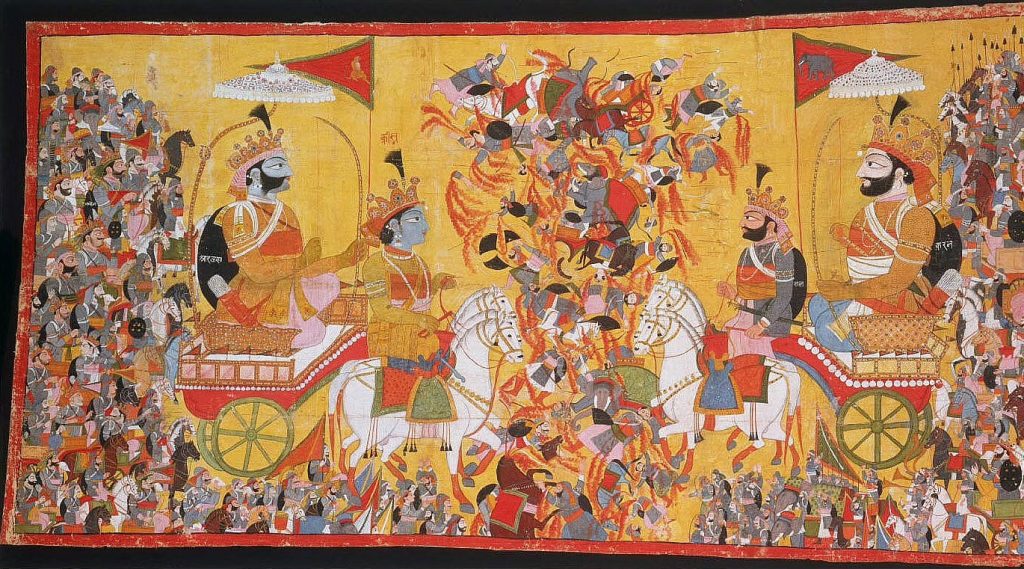
Afterwards, Glorantha is changed. Argrath marries Inkarne and becomes the King of Dragon Pass. Heroes are in great demand, defeating monsters, Elder Races, and making it possible for a new Kingdom of Dragon Pass to be a moment of long-remembered glory.
Inkarne is of course the Feathered Horse Queen, since marrying her is the way to become King of Dragon Pass. She got the title after her sister Vistera died in the Dragonrise… but, of note, unlike all the pro-Lunars who died there, she was actually super anti-Lunar. She “made a terrible pact to awaken the Dragons”, and died “witnessing her schemes reaching fruition”.
With this we enter an Orlanthi Golden Age of adventure and heroism and the King of Dragon Pass competes as a peer to the Red Emperor. But of course, it is in the nature of Golden Ages to end….
If you started playing in 1625 when RuneQuest was released, you might actually be in 1629 by now so this is useful:
And so after 1629, key parts of the setting have changed. Sartar is unified, rich and powerful, with a powerful cavalry army and a Sartar Magical Union. The Prince of Sartar is married to the Feathered Horse Queen and is King of Dragon Pass and Leader of the Sacred League (or whatever we are calling his Holy Country allies). It is only a matter of time before Furthest falls to the Prince. Adventurers are sent forth to fight monsters, gain magic, and extend the Prince’s authority. Praxian beasts get to graze on Kordros Island and in the maize fields along the Oslir.
Meanwhile the Lunar Empire reels and enters a prolonged crisis. Civil war and dangerous introspection. And of course, as the Red Goddess turns to her Black Phase we should be aware that she always continues turning. Nothing is always Dying. And even the Dead come to Life.
If we want any comparison post 1629 are comparable to the Conquest and Tournament Phases of Pendragon.
Here Jeff doesn’t reference the Pendragon RPG in general, but the Great Pendragon Campaign specifically, I think. This legendary campaign is divided into various “periods” of the Arthur myth: the King Uther prequels, the Boy King period, and so on. The Conquest period is when factions from all around Europe come into play. The Tournament period is when Arthur’s realm is relatively peaceful for a few years, and the player knights alternate between heroic adventures and great tournaments across the kingdom.
The Battle of Heroes makes an incredibly epic end to a volume of your campaign. Characters can fight their great enemies on a battle field boiling with spirits, elementals, and Rune Magic. Scores can be settled, characters can die gloriously or live in triumph. Think the Iliad or the Mahabharata.
The Battle of Heroes happens in 1628, and it’s what starts off this new “golden age”, Argrath’s reign as Prince of Sartar and King of Dragon Pass. According to several documents, the Battle of Heroes is when Harrek kills Jar-eel, among other things, but hey, who knows, maybe the historians got it wrong. Play to find out.
Fighting at the Battle of Heroes should be an epic event for your players. Survive it and you have a good chance of being one of the Companions of Argrath, effectively a Knight of the Round Table, one of the makers of this new Kingdom of Dragon Pass.
The participants at the Battle of Heroes is pretty much a Who’s Who of Sartar and the Lunar Empire. The Red Emperor, Jar-eel, Beet-Pot, Pharandros, Argrath, Harrek, Gunda, Jaldon Goldentooth, Leika Blackspear, Vamastal Greyskin, and pretty much every Wind Lord, Storm Voice, Sword Lord, Storm Khan, and Rune Lord you could shake a stick at.
I’m sure that many gamemasters will complain along the lines of “what are the puny adventurers supposed to do in such a big battle, especially if all the superhero NPCs are doing the heavy lifting, and the outcome is decided anyway?” I think the key is to give important missions to the players, and to change the degree of outcome accordingly. For instance, the adventurers might have the responsibility to setup Jar-eel nicely for Harrek: they might have to steal some McGuffin to lure her in, or maneuver troops to get her separated from her elite warrior entourage, or whatever. Regardless of whether the players succeed or fail, Harrek kills Jar-eel… but the difference is whether Harrek is happy about their performance, or whether he had to kill Jar-eel plus an entire platoon of Lunar hoplites that weren’t supposed to be there… “Hey Argrath, mate, didn’t you send some assholes to make sure that wouldn’t happen? I lost two hundred men because of this shit! What are you going to do about it?!” I’m sure that this sort of outcome has just as much impact on the players and the campaign, compared to whether the Sartarites or the Lunars win.
Another way of looking at this is the Battle of Heroes is a “shared event” – like the Dragonrise or Starbrow’s Rebellion or the Lunar Conquest of Boldhome – that changes the dynamics of the setting. The difference is that it is intended that your characters be able to participate in this event, gain glory or loss, and then branch off from it.
[…] like any good epic battle, I am sure there were plenty of monologues, philosophical and mystical speeches, and more. Can’t wait to send another group of players there!
Anyway, back to the main thread:
In the aftermath of the battle, as we all know, the Lunars suffered the worst defeat the Lunar Army had taken in battle since the era of Sheng Seleris.
The Red Emperor fled along the road to Furthest. He left the Bagnot and 2nd Furthest Foot behind in Bagnot.
The Sartarites lost comparatively minor casualties. Argrath followed up with an assault of Bagnot, but afterwards he was prevented from marching on Furthest by Harrek, who reminded him of his promise to attack Black Horse County. And so the Sartarite army marched unopposed to Dunstop. He garrisoned both cities but then headed into the Grazelands before beginning his famous campaign against Muse Roost.
While in the Grazelands, Argrath met and courted the Feathered Horse Queen and sent his companions to perform tasks on her behalf. The White Bull was said to be smitten by the charms and the wiles of the Feathered Horse Queen.
The companions here would, of course, include the player characters… well, assuming you play in a “followers of Argrath” campaign. Generally speaking, the hero-wars meta-plot might work a lot better if the players follow one of those big NPCs, so that’s something to discuss in session zero.
Meanwhile the Red Emperor did not tarry in Furthest, but fled to Mirin’s Cross and then on to Glamour. During the Sacred Time rites, he was murdered by the Great Sister, beginning the Lunar Civil War.
Big picture – the Lunar Empire clearly underestimated Argrath. They figured they were dealing with a traditional uprising or the kingdom of Sartar circa 1602, with maybe a hero or three. Instead, they were completely outclassed in magical units. The Red Emperor got the bulk of the blame here by the egi, which resulted in his sacrifice.
The City of Wonders
Let’s talk about the City of Wonders, the magical place at the heart of the Holy Country:
Belintar was a sacred figure, not a political or administrative figure. That’s really really hard for us moderns to wrap our head around, but Belintar’s main function was to be a conduit between the Mundane World and the Gods Realm. He’s a Living God, acknowledged by everyone in the Holy County. His palace was in the Hero Plane and to visit him was to enter it. At the City of Wonders, one might encounter gods and spirits, emissaries and ambassadors.
So less like an actual King, and more like, say, Ra in Stargate. He’s a God, and he has better things to do than discuss taxes and temple renovations with you.
Of course mundane people also lived in the City of Wonders – at its height (around 1600) it had perhaps 50,000 people or more making it bigger than Raibanth. It was vacated in 1616 after the Tournament of the Masters of Luck and Death failed to produce a new incarnation of Belintar – without Belintar’s presence, the City did not function for mortals. Only a few people, such as the rulers of the Sixths, could even open the paths to the City.
During its height (1320 to 1616), the City of Wonders deserved its name. The Library (also called the University) was the greatest in the world, with scholars from across the world. Humans, triolini, trolls, spirits, and gods mingled there. Amazing things like the Tricksters Theater and the Theater of Drama showed the possibilities of Illusion. The Sea Bazaar let merchants trade with far off triolini realms. I hear the best sea food in the world was there!
The City of Wonders was familiar to the Sartar Dynasty. Sartar himself was known to have been there, and perhaps gained many of his insights from Belintar himself. Tarkalor lived there for a time, as did many of his descendants. Like Nochet, the City of Wonders greatly influenced the young kingdom at Boldhome, which in its own way is an echo of the City of Wonders.
Sounds like a great place (I know one of my players would love to visit this Tricksters Theater!), too bad it’s gone before the main timeline starts… It’s tricky to get there before 1616 even with the “classic” RQ2 timeline.
However, I figure that a gamemaster could include the City of Wonders in their game with a bit of effort. They can foreshadow it with NPCs who’ve been there in their youth, artifacts coming from there being sold expensively at the city’s market, and so on. Maybe later the adventurers are sent to retrieve documents that originally came from the Library. And later still they get a glimpse of the City on the hero plane during some heroquest… until eventually they visit its magical echoes? Or something like that…

But the City of Wonders is now gone. Plundered and destroyed by Harrek the Berserk and now lost to the world.
I would say “goddammit, Harrek, stop fucking up everything” but Jeff has this to say:
The Golden Age must be killed for the story to start.
Orlanth had to kill Yelm. Zorak Zoran had to kill Flamal. Eurmal had to kill Grandfather Mortal. Death was necessary for the cycle of life and death to begin.
So remember how all the people who lived in the City of Wonders vacated it quickly when the magic started failing? Like I said earlier, they can show up in your campaign, but really they show up everywhere:
Now that diaspora from the City of Wonders ends up spreading this magical knowledge throughout the area. Imagine that diaspora going to Nochet, Whitewall, New Pavis, Boldhome, Wolf Pirates, etc. Even a few go to the Lunar Empire. And many end up influencing Sartar like the Chans, Leika Black Spear, Tarkala the Lover, etc. I suspect this is the origin story for many who end up in the Sartar Magical Union.
Combine this with the knowledge gained from participation in the Tournament of the Masters of Luck and Death, Argrath’s combination of Praxian vision quest + circumnavigation of the Homeward Ocean, and the swirling maelstrom caused by the Lunar wars in the Holy Country, and we have a perfect storm for the Hero Wars.
This is the environment we open with in 1625. And into that storm comes Argrath, Harrek, and Gunda.
If you are playing in an early era, here’s some useful information:
But let’s imagine the City of Wonders circa 1614. Many influential exiles from Starbrow’s Rebellion have likely taken up residency here, or at least have come to have an audience with Belintar. The City of Wonders is tied to Nochet, no doubt there is much shipment of grain and other foodstuffs to the City of Wonders (it is far too small an island to be self-sufficient).
When I think of the City of Wonders, I think some sort of fabulous version of the Palace of Fine Arts in San Francisco:

And remember, the City of Wonders was vacated only nine years ago (from the default starting date of 1625) and finally disappeared from the Mundane World only LAST YEAR.
And so although we as gamers have likely done very little with the City of Wonders, our characters must feel its absence like a hole. A manifestation of the Golden Age or the Unity, lost forever to the conflict between Storm and Moon. A wondrous unifying dream destroyed by war and ambition.
Like Hy-Brasil, Ys, or Atlantis, the City of Wonders now exists only in our dreams. ALTHOUGH…. there are those who claim to have entered it from the Hero Plane.
This dream of Unity has been briefly achieved and then lost to war and conflict many times in Glorantha. One might even say that is a key theme of the setting.
Different Experiences of a Deity
Here’s a brief but interesting (to me) post from BRP Central about how gods and cults differ between different regions of Glorantha:
I find different “experiences” of the god a more accurate description than [different “interpretations” of the god]. In Prax, we typically experience the Thunder God as the Thunder Bird, and so we view him mainly as the Adventurous young god. In Pavis, the Sartarites brought the Dragon Pass Orlanth and so of course we know of Thunderous and Rex. But those aspects rarely manifest in Prax – perhaps the Dragon Pass Orlanth is just mightier than the Orlanth of Prax? Perhaps here his brother is mightier, nearest to his place of victory and close to his Raging Storms? We experience those often, worst of all being the terrible Copper Winds.
Community Roundup
The community roundup is our highlight of interesting things being mentioned in the Glorantha-related Facebook groups, sub-Reddits, and other similar online places.
Helmets!

Katrin Dirim draw some shields a couple weeks ago, and now she’s drawing some helmets! And they’re lovely, as usual. You can play the game of which helmet is from which homeland… there are many obvious ones, but a couple where I’m not sure.
Livetweet (Somewhat) of Dragon Pass
Eff (if you’ve been around any Gloranthan online community, you know her…) has kinda-live-tweeted parts of a game of Dragon Pass, the old 1980 board game. I’m just posting a few select pictures here, but check out the Twitter threads for the turn-by-turn explanations, and the fan-fiction that goes with it.
Start with the setup, then follows each turn here, here, and here.
Troll Votive Offerings
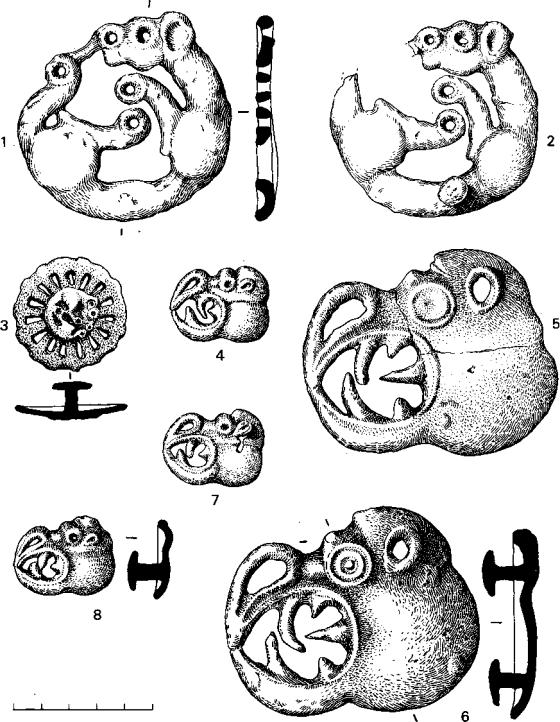
Andrew Joliffe found those illustrations (above) and wondered if they could be a good inspiration for some Uz votive images (the drawings are of items found in a Massagetan Warrior grave, published in the Antiquity Journal volume 64 issue 243). Andrew figured that “yes, these look nice”, so he actually made a model:
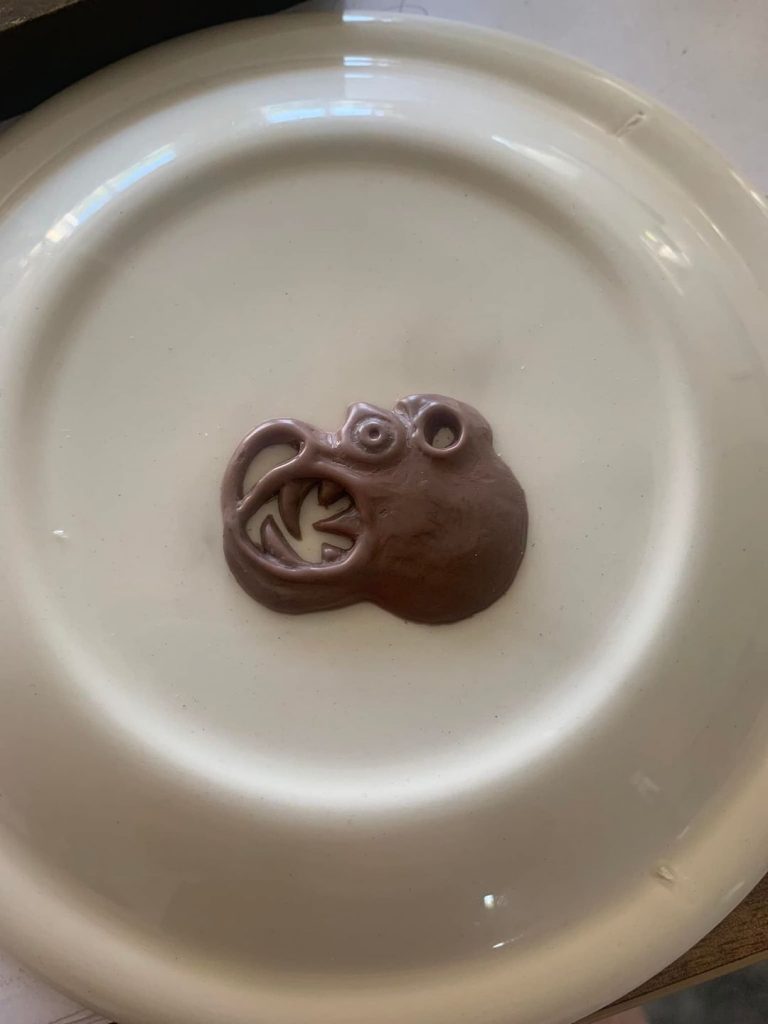
The idea, I belive, is to then cast it in metal.
RPGImaginings on Six Seasons in Sartar
What it says in the title! I agree with the host that Six Seasons in Sartar is great to shed some much needed light onto some of the obscure or hard-to-picture cultural and religious aspects of Orlanthi life.
Bud’s RPG Review on Six Season in Sartar
Incidentally, Bud, from Bud’s RPG Review, has also started a series on Six Seasons in Sartar! The first video is for members and patrons only, but I’m sure it will become public eventually.
Elsewhere on Arachne Solara’s Web
Not everything is about Glorantha, although most things are! Here are loosely relevant things that we found on the interwebs.
Slings, with Lindybeige
As mentioned last week, I kept watching other videos from Lindybeige! I really like his series on slings, which starts with the video above (there’s a handful of other videos on the subject, too, and I recommend you watch them all!) The bit about where and how to carry a sling at the beginning is just gold!
Thank you for reading
That’s it for this week! Please contact us with any feedback, question, or news item we’ve missed!



